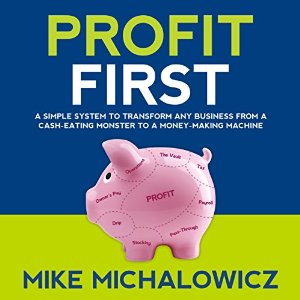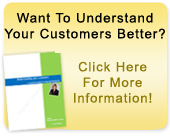 “For the longest time people believed that Earth was the center of the universe. Then one day, our understanding changed, and with it an old paradigm was destroyed. It happens over and over again. The world was flat, until it wasn’t. People couldn’t fly until they did. Profit happened last, until it didn’t. I believe that just because things are the way they are, doesn’t mean they’re right.” (Mike Michalowicz)
“For the longest time people believed that Earth was the center of the universe. Then one day, our understanding changed, and with it an old paradigm was destroyed. It happens over and over again. The world was flat, until it wasn’t. People couldn’t fly until they did. Profit happened last, until it didn’t. I believe that just because things are the way they are, doesn’t mean they’re right.” (Mike Michalowicz)
Yes Mike Michalowicz, author of The Pumpkin Plan and The Toilet Paper Entrepreneur has done it again – written a thought provoking book that aims to change the way entrepreneurs see things in business.
He refers to his latest book – Profit First – as “A simple system to transform any business from a cash-eating monster to a money making machine“. And how does this happen ? Put simply Mike slings out the standard accounting formula: Sales – Expenses = Profit and exhorts entrepreneurs to work with this formula instead: Sales – Profit = Expenses. Yes – I know. This requires a bit of thinking. As an accountant I definitely needed to think about this. Welcome to the world of Profit First.
Let me explain. No let’s leave Mike to explain it: “To date, entrepreneurs, CEOS, freelancers, everyone in nearly every type of business has been using the “sell, pay expenses, and see what’s left over” method of profit creation. This ingrained belief has us sell first, then pay expenses, and let the profit take care of itself. Which it rarely does, because the profit is what’s left over. An afterthought.”
According to Mike (and I completely agree with him) this is how the Profit First system should work in any business:
1. Use Small Plates – When money comes into your main operating account, immediately disperse it into different accounts in predetermined percentages. Each of these accounts has a different objective: one is for profit, one for owner pay, another for taxes and another for operating expenses. These are the four basic accounts and where you should get started, but you will get more advanced in account setup as we move along.
2. Serve Sequentially – Always, always move money to your Profit Account first, then to your Owner Pay Account and then to your Tax Account, with what remains to expenses. Always in that order. No exceptions. Move it, stash it and let it accumulate. And if there isn’t enough money left for expenses? This does not mean you need to pull from the other accounts. What it does mean is, you can’t afford those expenses and need to get rid of them.
3. Remove Temptation – Move your Profit Account and other accounts out of arm’s reach. Make it really hard and painful to get to that money, thereby removing the temptation to “borrow” (i.e., steal) from yourself. Use an accountability mechanism to prevent access, except for the right reason.
4. Enforce A Rhythm – Do your payables twice a month (specifically, on the 10th and 25th). Don’t pay only when money is piled up in the account. Get into a rhythm of paying bills twice a month so you can see how cash accumulates and where the money really goes. !is is controlled, recurring and frequent cashflow management, not by-the-seat-of your- pants cash management. Some memorable truisms from Profit First
Profit First gives you the tools to make it happen – in YOUR business. I especially liked the Instant Assessment form that helps business owners determine whether or not they are really making a profit. After all “Without an understanding of profitability, every business, no matter how big, no matter how “successful,” is a house of cards.” I liked this way of determining how profitable a business really is so much that I’ll definitely be sharing it with my business start-up students. Heck, I’ll be recommending they buy Profit First.
Now here’s the thing.
Those of you who know me, know that I’m a chartered accountant and that I’ve worked with business start-ups for many years. You know I’ve always strongly recommended that when a business receives money from a client they put to one side the money for sales tax/VAT, the money for tax and then 15% of what’s left for themselves. The rest is available to be spent on the business. You know that I’ve also always insisted they pay themselves at least the minimum wage – after all how can you tell if a business is profitable, viable, sustainable if you- the owner- don’t take any salary? I also stress the importance of understanding cashflow and regularly monitoring it. You also know that in February this year I launched my home study course – Financials Simplified – arguing that if a business doesn’t have a solid financial basis, if the owner doesn’t understand and keep a grip on the financial side of running a business then a business can’t grow successfully but … it can fail dismally.
So …
…when I tell you that had I known that Mike was writing Profit First and what it was going to be about I wouldn’t have bothered with Financials Simplified – I’d have waited and then promoted the heck out of Profit First then you know that this is a book you should immediately go and buy, read and APPLY to YOUR business. Mike has an easy-to-read writing style that’s very engaging and he presents getting a handle on the financials in a funky kind of way with loads of examples of businesses that have been in deep, deep trouble and then turned round once they used the Profit First system.
So don’t visit my Financials Simpified page just head on over to Amazon and get your copy of Profit First and when you’ve read it come back to leave a comment to let us know what you think of it.
I’ll leave you now with Mike’s message to readers of Profit First: “I hope you find Profit First to be a life (and business life) changing book. I wrote the book to empower you – to give you a simple system that will skyrocket your profits (and have you fall back in love with your business in the process.) I want the same for every entrepreneur who reads it.”




